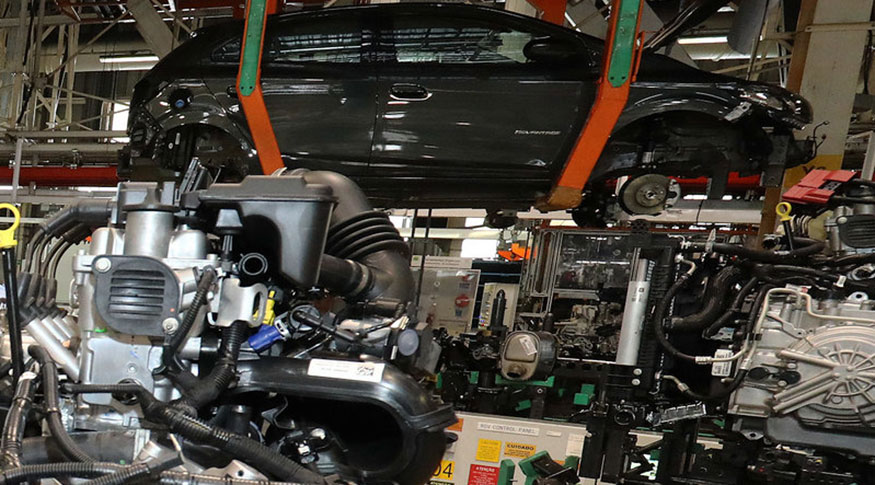National industry
Industrial production increased by 8% in July, with unprecedented hike in 25 of the 26 sectors
September 03, 2020 09h00 AM | Last Updated: September 04, 2020 01h17 PM
 Motor vehicle sector leads 8% rise of Brazilian industry in July - Photo: Itamar Aguiar/Palácio Piratini
Motor vehicle sector leads 8% rise of Brazilian industry in July - Photo: Itamar Aguiar/Palácio PiratiniIndustrial production increased for the third straight month and recorded an increase of 8% in July, against the previous month, after recording rises in May (8.7%) and June (9.7%). For the first time in the time series initiated in 2002, 25 of the 26 subsectors recorded positive rates. That result, however, did not counterbalance the cumulative 27% drop registered in March and April, as an effect of the social distancing period due to the Covid-19 pandemic. Data is present in the Monthly Survey of Industry (PIM), released today (3) by the IBGE.
In comparison with July 2019, industrial production recorded a decrease of 3%, the ninth straight negative result in this type of comparison. The cumulative rate in the last 12 months was – 5.7%, the biggest decrease since December 2016 (-6.4%).
Brazilian industry registered a decrease of 9.6% in the first seven months of 2020. According to the manager of the survey, André Macedo, that index and the reduction against last year’s result show that recovery is possible. ”Production has been resumed since May, with a significant increase, but which is not yet enough to make up for losses in the period of strict social isolation.”
Sector of vehicles still pushes the index, but increase ia widespread
Almost all the subsectors surveyed, 25 of the 26 ones, recorded increase in the month. According to Mr. Macedo, the dissemination of positive rates shows an increase of industrial production after measures aiming at the flexibilization of social distancing. "Some subsectors were less affected, for example, food products and cleaning products but, in general, social distancing caused great losses.". That is the biggest spread of the time series, that is, for the first time since 2002, 25 sectors had positive rates.
The main influence on the monthly result is still that of motor vehicles, trailers and bodies, with an increase of 43.9%. "The car industry leads many sectors as it is the main spot of other production chains%," Mr. Macedo highlights. The sector has a cumulative increase of 761.3% in the last three months, but in spite of that, is still below the level of last February, 33.9%.
It is also worth mentioning increases in basic metals (18.7%) and mining and quarrying industry (6.7%), machinery and equipment (14.2%), coke, petroleum products and biofuels (3.8%), other chemicals (6.7%), food products (2.2%), metal products (12.4%), non-metallic mineral products (10.4%), manufacture of wearing apparel and accessories (29.7%), rubber products and plastic material (9.8%), textiles (26.2%), computer, electronic and optical material (13.8%), electric machines, appliances and material (12.0%), miscellaneous products (27.9%) and beverages (4.6%).
The only negative result was that of printing and reproduction of recorded media, with a decrease of 40.6%. "That is an activity characterized by a volatile behavior. It fell in July, after having advanced 77.1% in June," Mr. Macedo says.
Regarding the index of major economic categories of industry, all of them recorded a rise in July, the main highlight being durable consumer goods, which had the highest positive rate in the month (42.0%) and recorded production increase for the third consecutive month, with a cumulative expansion of 443.8%.
The sectors that produce capital goods (15.0%) and intermediate goods (8.4%) increased above the average of industry. Semi and non-durable goods (4.7%) registered the least significant increase among the major economic categories. The three segments also recorded increase for the third straight month and had cumulative increases of 70.5%, 21.1% and 24.0%, respectively, being, thus, below the level of February 2020.




















